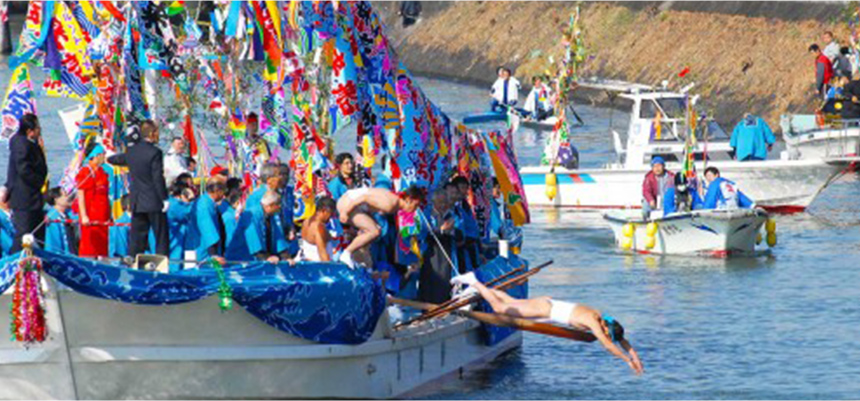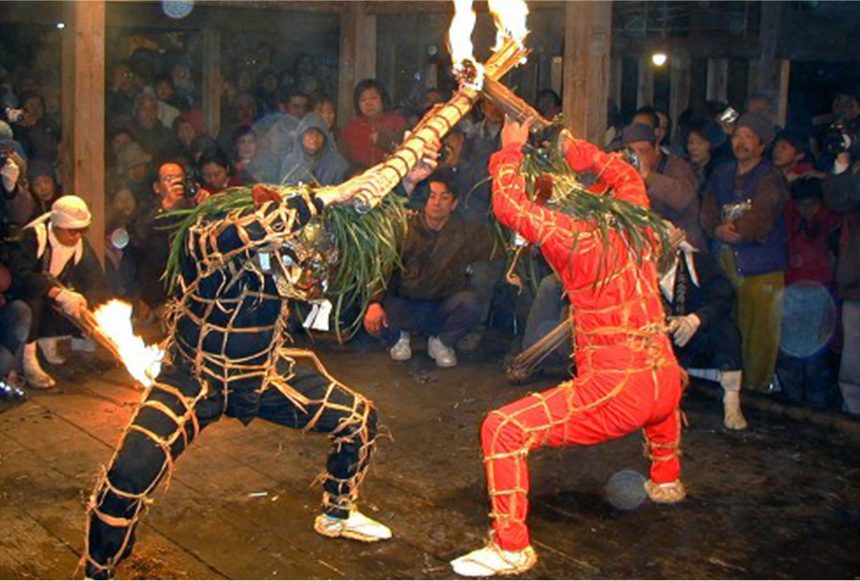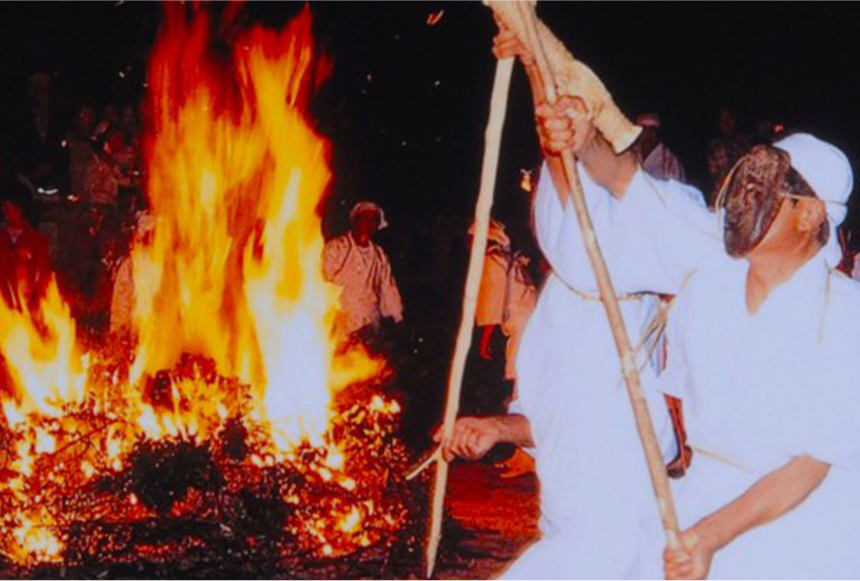Rokugo-Manzan Religious ceremony
What's on
There are a huge variety of events happening throughout the year and throughout Oita. The locals love gathering together and events of all descriptions can be found wherever they live, from the largest city through to the smallest hamlet. The following list includes most of the major events plus some other intriguing ones.
January
Horan Enya New Year Celebration

Even in the depths of winter, Horan Enya is a sufficiently unusual event that its draws thousands of locals and visitors alike to the banks of the Katsura-gawa river, which flows through the centre of Bungo Takada. For over 300 hundred years, a large boat decked out in colourful ceremonial flags of fishermen has been rowed slowly up stream by muscled young men, each naked except for a loin cloth. Originally an event to pay respect to the kami gods for safe passage, Horan Enya has long since morphed into a celebration of the new year.
To the beat of taiko drums and the chant 'Horan Enya, Enya Sanosassa' the rowers valiantly skull the boat upriver. They only leave their post at the oar to dive into the frigid water at the behest of an onlooker providing bottles of sake or similar celebratory gift for their efforts. Meanwhile, everyone else aboard the boat, including local dignitaries, guests and the year's Miss Bungo Takada, fling copious amounts of fortune-bearing rice cakes, wrapped in red paper, to the river banks, setting off an excited scramble for them amongst the throng of onlookers.
February
Shujo-Onie

Held each year around the Lunar New Year, Shujo-Onie at Tenen-ji temple is the Kunisaki Peninsula’s most distinctive and exciting festival. Oni devils, one dressed in black, the other in red and both sporting devil masks, are brought ‘alive’ by chanting and the ritual spewing of sake over them by a monk. After the two oni engage in a choreographed, sparring dance, escorted by acolytes they hold aloft flaming torches and begin an energetic dance around the festival building, a thatched roof and wooden structure located in a, usually, very quiet valley. As they make their way, crashing their torches all around, embers shower anyone nearby. Striking onlookers with their torches, is a final flurry before the oni head off into the night. Not surprisingly, the local fire brigade is on standby outside.
Contrary to the oni’s fearsomeness, however, their activities are to ward off illnesses and promote good health. Note that regulars to the event come prepared wearing clothing that will not burn! A less rumbustious but no less interesting version of Shujo-Onie is also held on alternate years at Iwato-ji and Jobutsu-ji temples.
October
Kebesu Festival

No-one seems to know the origins of Kebesu, where the central participants wear wooden, carved masks unlike anything any others found in Japan. One eye is closed and some say that this is symbolic of the iron smelting industry that once existed in Kunisaki over a thousand years ago. Apparently, iron workers often lost an eye in their arduous labours. Held for centuries on the 14th October every year, the repeated ritual of the masked Kebesu, dress in white robes, charging into a fire seems to lends credence to this theory but no-one is really sure. Regardless, it is a unusual and fascinating spectacle.




